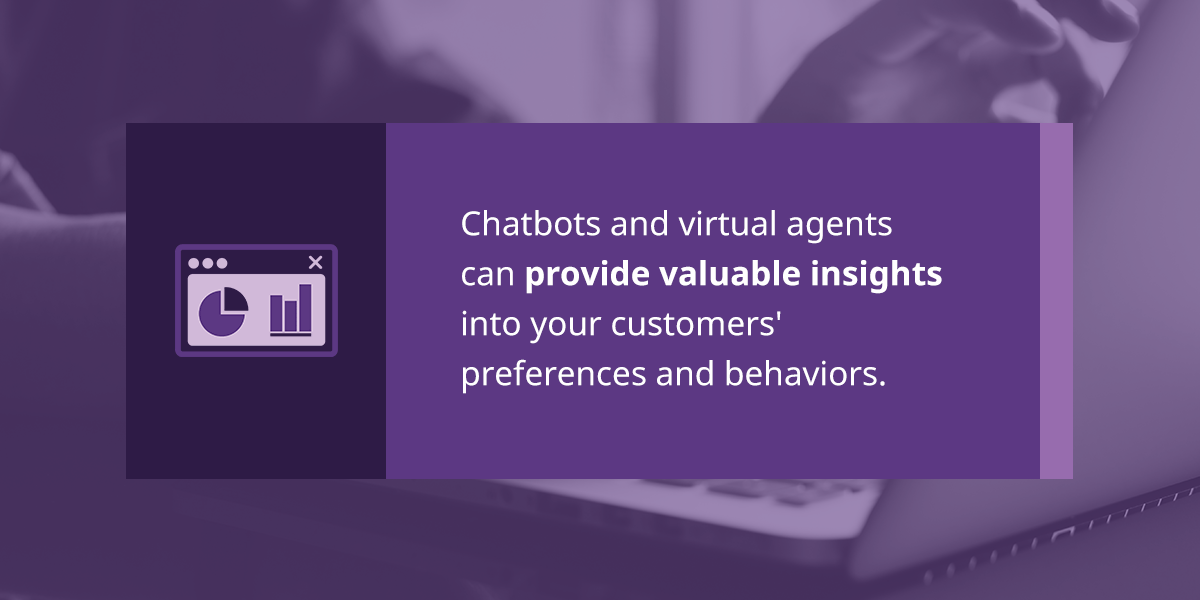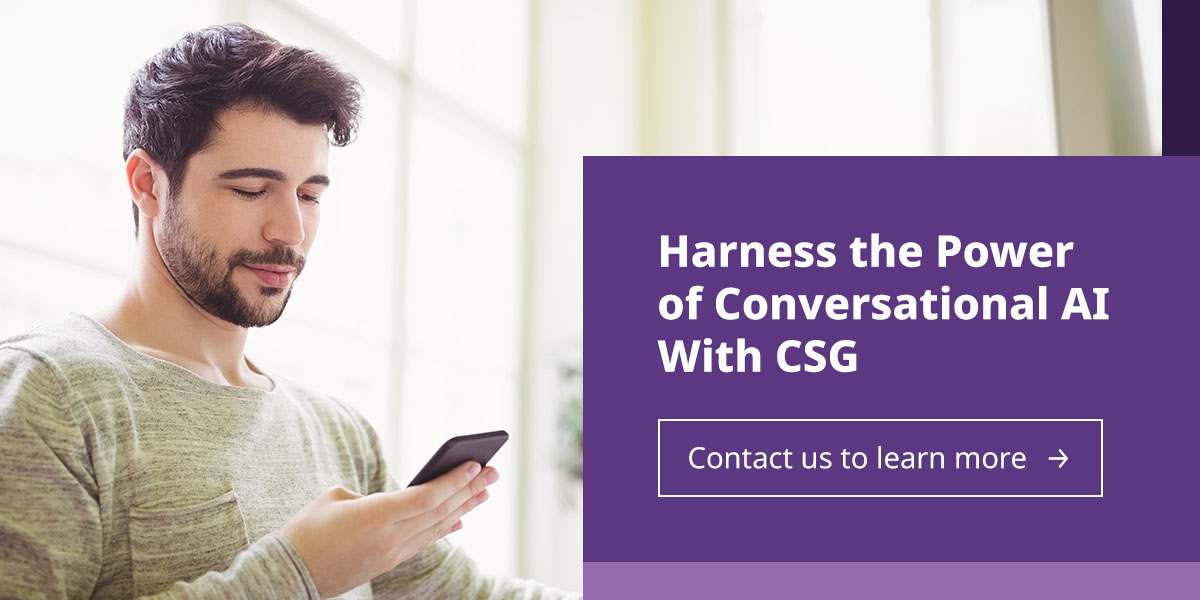Conversational artificial intelligence (AI) is reshaping the world of customer service through virtual agents, chatbots and other advanced software. Customers can interact with conversational AI mediums as if speaking with another human.
It’s no shock that the global conversational AI market was worth an estimated $7.61 billion in 2022. From 2023 to 2030, it’s projected to grow at a whopping 23.6% compound annual growth rate (CAGR). Chatbots are a popular form of conversational AI, handling high-level conversations and complex tasks.
How exactly do chatbots differ from conversational AI? Chatbots parrot human conversation to automate specific customer service tasks, such as query responses. Conversational AI is a broader term. Besides chatbots, it encompasses several types of innovative software that imitate human conversation.
Keep reading to learn more about how chatbots and conversational AI work.
What Is Conversational AI?
Conversational AI simulates human conversation using machine learning (ML) and natural language processing (NLP). Trained on large amounts of data like speech and text, it enables chatbots to understand human language and provide appropriate responses.
Conversational AI is context-aware and supports a variety of communication channels, including text, video and voice. This versatility allows it to understand requests with multiple inputs and outputs. It constantly learns from its interactions to improve its responses over time.
What Are Some Other Examples of Conversational AI?
Aside from chatbots, here are some other types of conversational AI.
1. Generative AI Agents
Generative AI agents are computer programs that use interactive software to mimic human actions and responses. These virtual agents use generative AI — which creates original and realistic text, images, videos and other media — to power voice or text conversations. They can make inferences about themselves and others, recall previous experiences and formulate strategies based on their surroundings.
2. Speech Recognition Software
This software transforms words spoken into a microphone into a text-based format. It’s generally used to transcribe phone calls, lectures, captions and more.
3. Text-to-Speech (TTS) Software
Also called “read-aloud technology,” TTS software takes written words on a computer or digital device and changes them into audio form. It is trained to read digital text aloud, as the name implies.
You can essentially think of TTS as the opposite of speech recognition software, converting text to speech instead of speech to text. It is often used to generate spoken directions and audiobooks. TTS can also enable easier information processing for people with various reading challenges, such as vision impairments, dyslexia and dysgraphia.
4. Virtual Assistants
One of the most common conversational AI applications, virtual assistants — like Siri, Alexa and Cortana — use ML to ease business operations. They are typically voice-activated and can be integrated into smart speakers and mobile devices.
Each time a virtual assistant makes a mistake while responding to an inquiry, it leverages this data to correct its error in the future and improve its responses over time.
What Are the Benefits of Conversational AI?
Implementing conversational AI into your workflow can offer a range of benefits for your business:
- Improved customer experience: Virtual agents and chatbots are always available to assist customers, regardless of the time of day. Customers don’t have to sit on the phone to ask a simple question. They can get the answer they’re looking for in seconds. Whether it’s 5 p.m. or 3 a.m., a chatbot will always jump into action to assist customers. Quicker responses and resolutions translate to higher satisfaction, improving customers’ overall experience with your brand.
- Enhanced data analytics: Chatbots and virtual agents can provide valuable insights into your customers’ preferences and behaviors. You can then use this data to strengthen your customer service efforts and strategies.
- Increased productivity: By integrating conversational AI to handle simple queries, you can allow your support team to focus on other tasks. A study found that tech support agents who use conversational AI can boost their productivity by 14%.
- Reduced costs: AI-based chatbots and agents can decrease costs by automating manual and repetitive processes, including general inquiries, technical assistance and order placements. Conversational AI minimizes the need for human intervention, reducing customer support costs by up to 30%.

What Is a Chatbot?
Have you ever opened a website and were instantly greeted by a pop-up message in the corner of the screen? Perhaps it said something along the lines of:
“Hi, welcome to [website name]! I’m your support bot. What can I help you with?”
If so, you’ve experienced a chatbot in action. A chatbot is a type of conversational AI that replicates written or spoken human conversation. It’s often used in customer service settings to answer questions and offer support. Chatbots can manage 65% of customer inquiries and routine tasks, making them a valuable investment for businesses.
Traditional vs. Conversational AI Chatbots
Though chatbots are a form of conversational AI, keep in mind that not all chatbots implement conversational AI. However, the ones that do usually provide more advanced, natural and relevant outputs since they incorporate NLP.
Below are the two types of chatbots.
1. Traditional or Rule-Based
Instead of learning from conversations with humans, rule-based chatbots use predetermined answers to questions. They provide scripted responses triggered by specific phrases or keywords.
Traditional chatbots may be advertised as having conversational abilities. However, human agents write and input their scripts, meaning they have limited response capabilities beyond common inquiries. If a customer says something that doesn’t align with the prewritten questions and keywords, the rule-based chatbot won’t know how to answer. As a result, they may receive a message like:
“I’m sorry, I don’t understand your request. Try inputting another phrase or choose from the options below.”
2. AI-Based
Conversational AI chatbots teach themselves through reinforcement learning rather than using scripts. They learn from interactions with customers to better understand their wants and needs over time, thus improving their feedback and services.
Unlike conventional chatbots, AI-based chatbots incorporate NLP to recognize human emotions and intents. They can gauge the contexts of conversations and answer naturally. For instance, they can detect the difference between a customer who is happy with their product versus one with a complaint and respond accordingly.
Harness the Power of Conversational AI With CSG
While there’s a subtle difference between chatbots and conversational AI, both leverage ML and NLP to provide better customer service. In turn, you can potentially boost brand engagement, leads, sales and revenue.
At CSG, we can help you integrate conversational AI software to resolve requests, streamline support and improve customer experience one interaction at a time. Reduce costs and satisfy your customers with conversational AI that understands their wants and needs.
We provide conversational AI software as part of our CSG Xponent Engagement Channels. Xponent offers numerous other features like payment kiosks, email services and mobile push notifications to simplify communication with your customers. Your business can implement a digital engagement platform to contact customers via chatbots, call centers or email.
Give your customers the prompt support they require, no matter the time of day. Contact us today to discover more about what our solutions can do for you!


